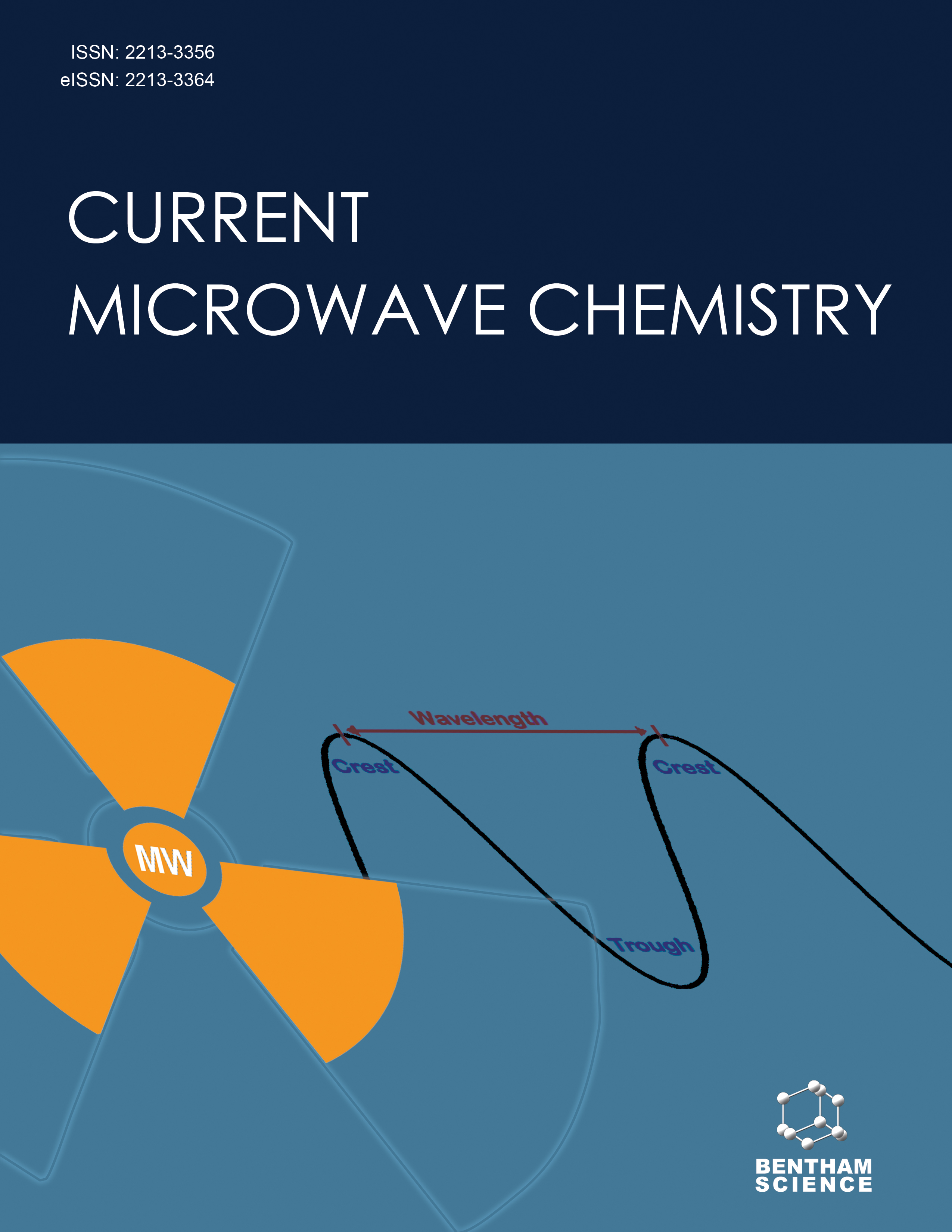- Home
- A-Z Publications
- Current Microwave Chemistry
- Previous Issues
- Volume 7, Issue 1, 2020
Current Microwave Chemistry - Volume 7, Issue 1, 2020
Volume 7, Issue 1, 2020
-
-
Microwave Assisted Catalyst-free Synthesis of Bioactive Heterocycles
More LessAuthors: Bubun Banerjee and Gurpreet KaurThis review deals with the recent advances on the microwave-assisted synthesis of bioactive heterocycles without using any catalyst under various reaction conditions. Synthesis of various biologically promising N-heterocycles, O-heterocycles, S-heterocycles, N as well as O- or S-heterocycles reported so far under catalyst-free microwave-irradiated conditions are discussed in this review.
-
-
-
Microwave-accelerated Carbon-carbon and Carbon-heteroatom Bond Formation via Multi-component Reactions: A Brief Overview
More LessAuthors: Kantharaju Kamanna and Santosh Y. KhataviMulti-Component Reactions (MCRs) have emerged as an excellent tool in organic chemistry for the synthesis of various bioactive molecules. Among these, one-pot MCRs are included, in which organic reactants react with domino in a single-step process. This has become an alternative platform for the organic chemists, because of their simple operation, less purification methods, no side product and faster reaction time. One of t Read More
-
-
-
Recent Progress on Carbon-chalcogen Bond Formation Reaction Under Microwave Irradiation
More LessAuthors: Brindaban C. Ranu, Tubai Ghosh and Laksmikanta AdakThe carbon-chalcogen bond formation is of much importance as organochalcogenides scaffold, and in general, it shows by organochalcogenide scaffolds, in general, show promising biological activities and many compounds containing chalcogenide units are currently used as drugs, agrochemicals and useful materials. Thus, a plethora of methods has been developed for the formation of carbonchalcogen bonds. This Read More
-
-
-
Microwave-assisted One-pot Synthesis of Amide Bond using WEB
More LessAuthors: Kantharaju Kamanna, S.Y. Khatavi and P.B. HiremathBackground: Amide bond plays a key role in medicinal chemistry, and the analysis of bioactive molecular database revealed that the carboxamide group appears in more than 25% of the existing database drugs. Typically amide bonds are formed from the union of carboxylic acid and amine; however, the product formation does not occur spontaneously. Several synthetic methods have been reported for amide bond formatio Read More
-
-
-
Lewis Acid Promoted, One-Pot Synthesis of Fluoroquinolone Clubbed 1,3,4-Thiadiazole Motifs under Microwave Irradiation: Their Biological Activities
More LessAuthors: Navin B. Patel, Rahul B. Parmar and Hetal I. SoniBackground: A Lewis acid promoted efficient and facile procedure for one-pot synthesis of a novel series of fluoroquinolone clubbed with thiadiazoles motifs under microwave irradiation is described here. This technique has more advantages such as high yield, a clean procedure, low reaction time, simple work-up and use of Lewis acid catalyst. Objective: Our aim is to generate a biologically active 1,3,4- thiadiazole rin Read More
-
-
-
Microwave Thermal Effect on Diels-Alder Reaction of Furan and Maleimide
More LessAuthors: Simin Sun, Chong Teng and Jiaxi XuBackground: Higher temperature regions (hot spots) have been observed in organic reactions and are attributed to microwave selective heating. The accumulated heat in reaction systems accelerates certain reactions. Methods: The theoretical calculation was applied to select a suitable Diels-Alder reaction as a molecular probe to determine the microwave thermal effect on Diels-Alder reaction, one class of bimolecular reactio Read More
-
-
-
Thermal Effect in the Microwave-assisted Aminolysis of Benzoates and Amines
More LessAuthors: Dongqiang Yang and Jiaxi XuBackground: Microwave selective heating thermal effect is obvious in unimolecular organic reactions. However, it is unclear whether it exists in bimolecular organic reactions under strictly controlled reaction temperature conditions. Objective: To determine whether microwave selective heating effect exists in the microwave-assisted bimolecular reactions. Methods: Hammett linear relationships in “one-pot” aminolyses of Read More
-
Most Read This Month
Article
content/journals/cmic
Journal
10
5
false
en


